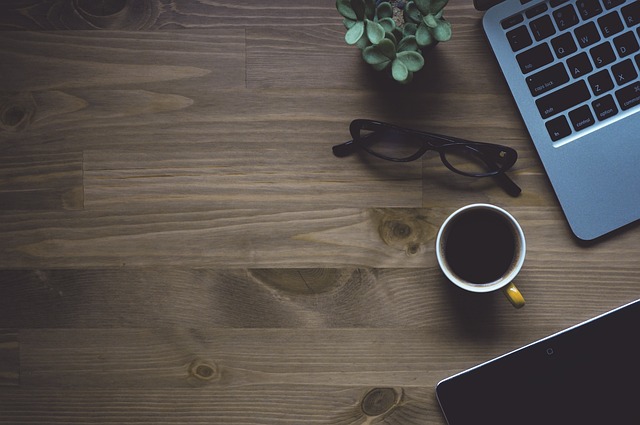How to Design T-Shirts & Merchandise with Free Tools

Designing your own t-shirts and merchandise can be a fun, creative, and even profitable endeavor. Whether you’re creating designs for personal use, gifts, or starting a side hustle, there are plenty of free tools available online that make the process accessible to everyone—even if you’re not a professional designer. In this guide, we’ll walk you through the steps to design eye-catching t-shirts and merchandise using free tools, along with tips to ensure your designs stand out.
Why Design Your Own Merchandise?
Designing your own merchandise allows you to express creativity, build a brand, or start a business without needing extensive technical skills. Here are some reasons why you might want to create custom designs:
- Personal Expression : Showcase your personality, interests, or values.
- Gift Ideas : Create unique, personalized gifts for friends and family.
- Branding : Promote your business or cause with branded apparel.
- Side Hustle : Sell your designs on platforms like Etsy, Redbubble, or Printful.
- Community Building : Design merchandise for events, teams, or organizations.
Essential Elements of a Great Design
Before diving into the tools, let’s break down what makes a great t-shirt or merchandise design:
- Simplicity : Avoid clutter; focus on one central idea or message.
- Typography : Choose fonts that match the tone of your design (e.g., bold for impact, script for elegance).
- Color Palette : Use colors that complement each other and align with your theme.
- Balance : Ensure elements are evenly distributed across the design space.
- Scalability : Make sure your design looks good at different sizes (small logos vs. large prints).
Free Tools for Designing T-Shirts & Merchandise
Here are some of the best free tools you can use to create stunning designs:
1. Canva
Overview:
Canva is a user-friendly graphic design platform with drag-and-drop functionality. It offers thousands of templates, including ones specifically for t-shirts and merchandise.
Key Features:
- Pre-made templates for t-shirts, mugs, posters, etc.
- Extensive library of fonts, icons, and graphics.
- Easy customization options.
- Free version includes basic features; premium elements require payment.
Pros:
- Beginner-friendly interface.
- No prior design experience needed.
- Cloud-based, so you can access projects from anywhere.
Cons:
- Some premium assets cost extra.
- Limited advanced editing capabilities compared to professional software.
2. GIMP
Overview:
GIMP (GNU Image Manipulation Program) is a powerful open-source alternative to Adobe Photoshop. While it has a steeper learning curve, it provides complete control over your designs.
Key Features:
- Advanced photo editing and graphic design tools.
- Supports layers, masks, and filters.
- Fully customizable workspace.
- Completely free and open-source.
Pros:
- Highly versatile for both beginners and pros.
- No subscription fees.
- Large community support and tutorials.
Cons:
- Interface may feel outdated or overwhelming for new users.
- Requires time to learn advanced features.
3. Photopea
Overview:
Photopea is an online editor similar to Photoshop but completely free. It runs in your browser and supports PSD files, making it ideal for working with layered designs.
Key Features:
- Compatible with Photoshop file formats (.PSD).
- Layer-based editing system.
- Accessible from any device with internet connectivity.
- Includes essential tools like brushes, shapes, and text effects.
Pros:
- No installation required.
- Lightweight and fast.
- Perfect for quick edits or small projects.
Cons:
- Ads can be distracting.
- Lacks some advanced features found in paid software.
4. Crello (Now VistaCreate)
Overview:
Formerly known as Crello, VistaCreate is another intuitive design tool offering templates for social media posts, presentations, and merchandise.
Key Features:
- Drag-and-drop editor with ready-to-use templates.
- Animation tools for dynamic designs.
- Collaboration features for team projects.
- Free plan includes limited access to templates and assets.
Pros:
- Modern and sleek interface.
- Great for animated designs.
- Suitable for non-designers.
Cons:
- Many premium templates and assets are locked behind paywalls.
- Fewer customization options than Canva.
5. T-Shirt Mockup Generators
Mockups allow you to visualize how your design will look on actual products before printing. Here are two popular free mockup generators:
- Placeit : Offers a variety of realistic t-shirt mockups. The free version includes watermarks, but it’s excellent for testing ideas.
- Smartmockups : Provides free and paid mockup templates for t-shirts, hoodies, hats, and more.
Pros:
- Helps clients or customers see the final product.
- Saves time by skipping manual mockup creation.
Cons:
- Watermarked images in free versions.
- Limited customization options.
Step-by-Step Guide to Designing a T-Shirt
Follow these steps to bring your design idea to life:
Step 1: Define Your Concept
Decide on the purpose of your design (personal, promotional, commercial). Brainstorm themes, slogans, or visuals that align with your goal.
Step 2: Choose a Tool
Select a design tool based on your skill level and project requirements. For beginners, Canva or Placeit is recommended. For advanced users, try GIMP or Photopea.
Step 3: Select a Template or Start from Scratch
If you’re unsure where to begin, choose a pre-made template and modify it. Alternatively, start with a blank canvas for full creative freedom.
Step 4: Add Text and Graphics
Incorporate text, logos, illustrations, or photos. Keep the design balanced and visually appealing.
Step 5: Experiment with Colors and Fonts
Play around with color combinations and typography styles until you find something that fits your vision.
Step 6: Preview Your Design
Use mockup generators to preview how your design will appear on a real t-shirt. Adjust spacing, sizing, or alignment as needed.
Step 7: Save and Export
Save your design in high-resolution formats like PNG or SVG for printing purposes. Ensure transparency is enabled if necessary.
Tips for Creating Professional-Looking Designs
- Keep It Simple : Don’t overcrowd your design. Focus on one key element.
- Choose High-Quality Images : Avoid pixelated or blurry graphics.
- Understand Color Theory : Use complementary colors to enhance visual appeal.
- Test Different Sizes : Ensure your design works well when scaled up or down.
- Get Feedback : Share drafts with friends or colleagues for constructive criticism.
Exporting and Printing Your Designs
Once your design is ready, here’s how to proceed:
Exporting
- Save your file in a print-ready format (e.g., PNG, PDF, or SVG).
- Check resolution settings (300 DPI is standard for printing).
Printing Options
- Print-on-Demand Services : Platforms like Printful, Teespring, or Redbubble handle production and shipping.
- Local Print Shops : Visit local printers for custom orders and better quality control.
- DIY Printing : Invest in a heat press machine or iron-on transfers for small batches.




